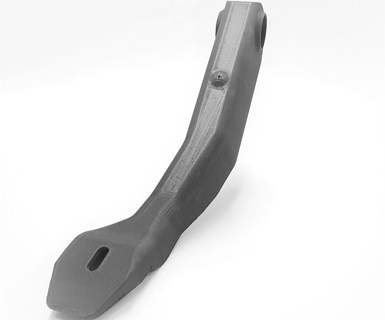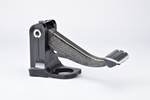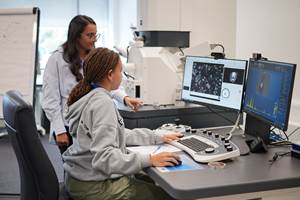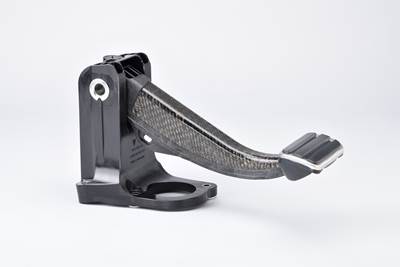Lehvoss NA, Forward Engineering NA collaborate on 3D printing
The collaboration leverages additive manufacturing to accelerate development of automotive structural thermoplastic products.

Lehvoss North America LLC (Pawcatuck, Conn., U.S.) a provider of high-performance compounds and 3D printing materials, announced on July 17 a formal collaboration with Forward Engineering North America LLC (FENA, Royal Oak, Mich., U.S.). FENA is a newly established division of Forward Engineering GmbH (München, Germany), a global engineering and consulting firm specializing in enabling the cost-effective inclusion of fiber-reinforced polymer composites in serial mass-produced automotive structures. The collaboration aims to fill the “knowledge gap” in Design for Additive Manufacturing (DfAM) in the automotive industry by providing guidance in translating performance characteristics between additive manufacturing (AM) parts and injection molded parts.
Together, Lehvoss and FENA have established an AM Lab in Royal Oak, Miss., U.S. to support automotive manufacturing and product development engineers in accelerating their product development programs. According to Lehvoss, at the AM lab, engineers can work with the team to select the right materials and processes to meet their application requirements, and in many cases realize functional prototypes produced on site. “Successful product development requires the right mix of design, material and process,” shares Adam Halsband, Forward Engineering North America’s managing director. “The Lehvoss/Forward Engineering collaboration and establishment of the AM lab brings these resources together in a responsive package that is accessible to the engineers that need them.”

3D-printed brake pedal. Source | Lehvoss
One of the challenges to using 3D printed parts as structural automotive components, says Lehvoss NA, has been the availability of materials for AM that emulate the performance characteristics of highly-filled structural and semi-structural automotive grade injection molding grade resin compounds. The company says with the introduction of its range of 3D printing materials including Luvosint and Luvocom 3F into the North American market, the range of applications for polymers has been extended. Further, Lehvoss NA contends the materials will ensure that the products produced from them in many industries are able to meet stringent functional and performance requirements.
Lehvoss points to several of its solutions, including a family of high-performance compounds which are available in pellet, filament and powder formats for FFF and powder bed fusion AM, which meet the demanding requirements of automotive applications. “Automotive OEMs and suppliers want to accelerate product development through the production of functional structural prototypes with additive manufacturing (AM). 3F Printing offers a relatively fast and cost-effective means to produce these functional structural prototype parts that meet demanding performance requirements,” says Martin Popella, sales and business development manager at Lehvoss. “However, the right materials and process parameters must be selected to deliver quality parts that meet targeted requirements including quality, consistency and repeatability.”
Forward Engineering is said to have developed a 3F Twin Process to guide OEMs and tier suppliers in the translation of their product requirements to functional structural 3F printed parts that emulate the performance of their injection molded twin part. In this way, Lehvoss says, concepts can be quickly developed, validated and translated to production of injection molded products. The Forward Engineering team has been supporting North American clients and collaborating with regional technology partners on the accelerated adoption of composite-intensive mixed material solutions for several years. Electrification, automation and demand for cost-effective innovation has fueled a steadily increasing demand for FENA’s unique production-based design and engineering services in the North American market.
Popella highlights a key goal of this collaboration: “Local support and bringing expertise around 3D printing together will create a hub for the 3DP value chain, which will further strengthen the region and accelerate the deployment of additive manufactured components at automotive OEMs and tier suppliers.”
Related Content
The Native Lab launches composites course training membership plan
Courses that touch on the fundamentals of composite materials, design, analysis and more are available for individuals and companies alike through TNL’s online platform.
Read MoreInha University incorporates SwiftComp simulation software to virtually test composites
AnalySwift’s SwiftComp tool aims to mitigate the burden of costly experiments and enable accurate testing of woven and braided composite structures.
Read MoreToray, University of Chicago speed up polymer recycling R&D
A jointly developed multi-scale computational predictive technique can accurately predict viscoelasticity from the chemical structures of polymers, ramping up product maturation.
Read MoreZeiss, Imperial College London summer school enhances materials, sustainability learning
Twenty-four next-generation students attended the Imperial College London this August to advance their scientific knowledge, with workshops, lectures, activities and a composites competition.
Read MoreRead Next
Lanxess presents thermoplastics for automotive applications
The company is showcasing use of its composite materials in A-pillar automotive structures and electric vehicle charging applications at the VDI Congress PIAE virtual event in July.
Read MorePlant tour: Daher Shap’in TechCenter and composites production plant, Saint-Aignan-de-Grandlieu, France
Co-located R&D and production advance OOA thermosets, thermoplastics, welding, recycling and digital technologies for faster processing and certification of lighter, more sustainable composites.
Read More“Structured air” TPS safeguards composite structures
Powered by an 85% air/15% pure polyimide aerogel, Blueshift’s novel material system protects structures during transient thermal events from -200°C to beyond 2400°C for rockets, battery boxes and more.
Read More













.jpg;maxWidth=300;quality=90)









